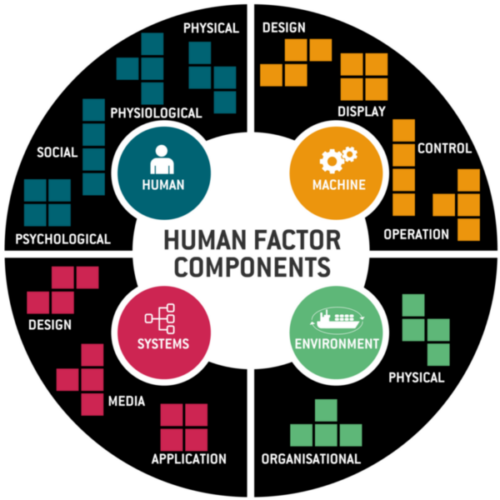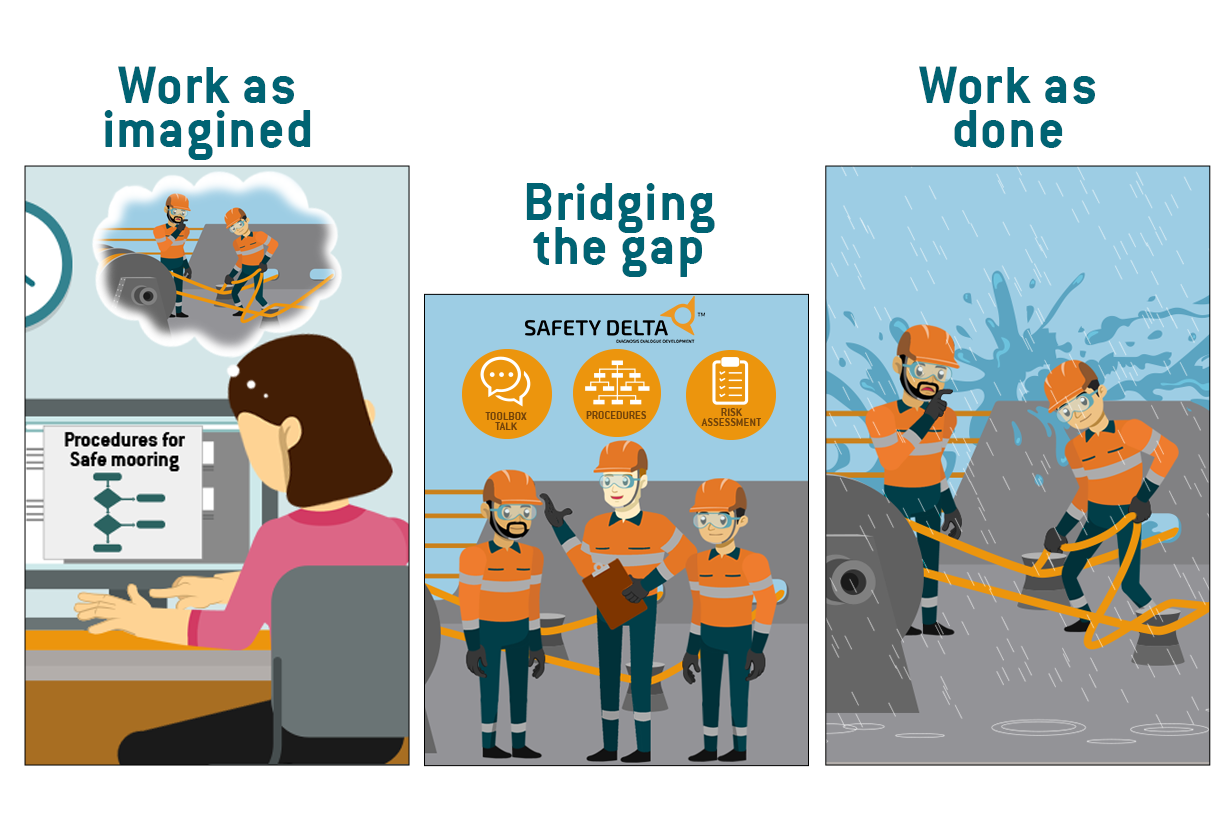This small series of two article is actually a compilation of four articles which have been published in the Safety Delta bulletins, Among us. The articles were originally targeted Safety Delta users, however, we believe they can give everyone an overview of how Safety Delta accommodates a lot of the new thoughts and approaches towards Human Performance taking the human factors into consideration. See for yourself:
Human Factors in the maritime industry - in brief
Even before human factors became the trending topic in the maritime industry, the Safety Delta concept has already recognised the value of a human factors approach in building a proactive and resilient safety culture on board. In both process and scope, Safety Delta is aligned with human factor management.
Taking a human factors approach means recognising that it is the people on our ships and in our operations and support teams who make safety work. However, human error still occurs in interactions with conditions, systems, and/or other people. By addressing these interactions, we can reduce human error and thereby reduce incidents and improve reliability and productivity.
People will make mistakes.
Naturally, their actions are rarely malicious, and they usually make sense to them at the time they decide to take (or not take) a certain action. We know that mistakes are typically due to underlying conditions and systems, and since human error will never be eliminated entirely, we try to make sure that our most critical tasks and barriers are resistant to error. And in a learning organisation focus should also be on learning before an incident happens. Understanding why mistakes happen can help us prevent or cope with them.

Short resume of the Delta process
The Safety Delta process involves the Diagnosis, Dialogue, and Development stages which are all key to identifying issues of human factors, maintaining two-way communication between ship and shore, and promoting crew skills and behaviour development through collaborative training.
Safety Delta is also designed to help organisations monitor, manage, and improve the human factors on board proactively and continuously. Once the three-stage cycle is completed, the vessel undergoes another cycle to help them determine any new human factor challenges. The Safety Delta process ensures that all crew members, from senior officers to junior officers and ratings or cadets, as well as office personnel, contribute to the shaping of the on-board culture.
Here, the Safety Areas come in
The current list of Safety Delta safety areas highlights different soft skills that address the interactions between crew members as well as with their environment, the systems and processes, and the machines. Four new safety areas have recently been added to the roster. All safety areas target the different human factors that the on-board crew can work on.
Below are the Safety Delta safety areas:
Why should we care about a human factors approach?
In life, not everything goes as planned. More so for jobs on board.
When unexpected things happen, how does your vessel view them?
While it is common to point to human error, the truth is that the crew should not only be seen as a source of error but rather as a resource of safety. And there could be more reasons behind the difference between ‘work as imagined’ (the ideal way we envision accomplishing a job) and ‘work as done’ (the actual execution of the job).

It is high time we look through the lens of a human factors approach
When we do so, we get a complete and more realistic view of the various things that influence crew and team performance.
This approach helps the crew, leaders, and the organisation to:
Manage safety risks and improve team performance
Crew members, leaders, and the organisation broaden their skills in spotting the gaps between work as imagined and work as done, thereby reducing the possibility of human error.
TIP: Toolbox talks and work debriefs in which all team members actively participate are some ways to help bridge the gaps.
Promote crew well-being and employee engagement
The machine, systems, and work environment are developed to better accommodate human limitations. When all is well, it improves the crew’s well-being, which leads to increased engagement and safer, more efficient work. Sometimes we need help identifying the weak points so the circumstances for the crew’s wellbeing are maintained.
TIP: Fatigue management and mental health awareness are two modules that will help the crew prevent job stress and create an open and caring atmosphere.
Build a learning culture
A human factors approach stimulates a learning culture that addresses unsafe and unhealthy work conditions even before incidents happen. This ensures more lasting effects in the improvement of safety behaviour and performance. That is why we have Safety Delta, because it makes us focus on issues that should be addressed, even if we haven’t had an incident yet.
TIP: The Safety Delta cycle includes the Development stage, where the crew strengthen their knowledge in certain areas identified in the Diagnosis stage. As you finish each cycle, take note of the learning opportunities linked to the Crew Safety Diagnosis report result.
Satisfy industry quality standards
The maritime industry has started calling for human factors management policies among shipping companies, and there are signals from various regulatory bodies that human factors will play a major role in future safety requirements.
TIP: Even though it is still unclear how the industry should comply, working with Safety Delta now will help you fulfil requirements that are already here or will come in the near future. We will update the current learning materials to assist your vessels in complying.
The human factors approach is at the heart of Safety Delta
Safety Delta helps you identify and manage the human factors that influence the crew’s behaviour and performance.
It is an ongoing, collaborative process that aims to promote a proactive and resilient safety culture. Because you continuously evaluate, discuss, and learn, you can do your tasks and jobs closer to “work as imagined”.
The following article will give you concrete ideas about modules and activities in Safety Delta that promote a human factors approach.
If you have already had enough and just wish to talk to us, we are here to help you.
Contact us for personal advice
Would you like us to call you?
... about Safety Delta


